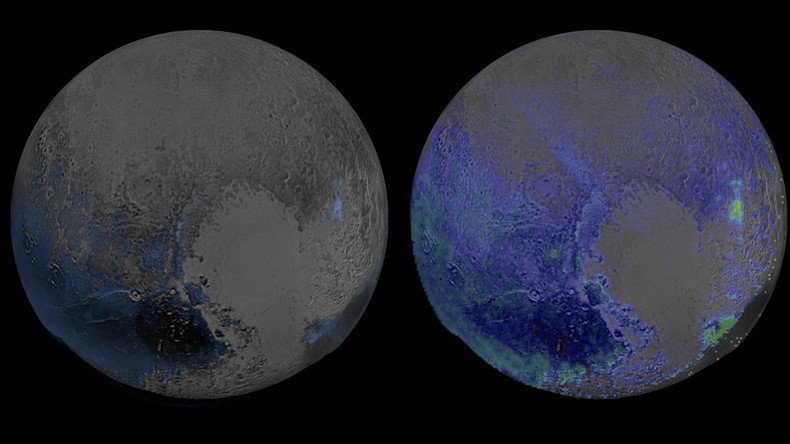Stunning Pluto ice map reveals more frozen water than ever

A bright blue map highlighting H2O ice on Pluto reveals much more of the valuable liquid than previously thought.
The image, stitched together from snapshots and data sent from NASA’s New Horizons spacecraft, shows areas of frozen water covering a significant section of the dwarf planet.
Making up Pluto’s crustal bedrock, “the canvas on which its more volatile ices paint their seasonally changing patterns” according to NASA, the solid H2O can be seen in a “combined multispectral ‘data cube’ covering the full hemisphere” based on two LEISA scans taken fifteen minutes apart last June from a distance of 67,000 miles away, Astronomy magazine reports.
This has been #Denied for 20 years, but now?
Solar system may have 9 planets after all; Pluto still not one of them https://t.co/vtotW23XVE
— C.I.D.P Astronaut (@The_Jag_10) January 21, 2016The left size of the image released by NASA this week compares LEISA spectra with a “pure water ice template spectrum.”
NASA says there are limitations to the technique, as water ice can be masked by methane ice.
The map was only able to show areas that were rich in water ice and without much methane ice.
NASA ‘amazed’ by the best close-ups of Pluto yet https://t.co/P07WotqM2Zpic.twitter.com/SstlzrY8ys
— RT (@RT_com) December 6, 2015The image on the right combines the contributions of Pluto’s different ices together. This only includes ices that are included in the model, but the team continues to add new data as it is discovered.
Little water ice was found on the western side of Pluto, Sputnik Planum, and the far north, Lowell Regio.
This suggests the icy bedrock of Pluto remains hidden under other methane, nitrogen, and carbon monoxide in those regions.












